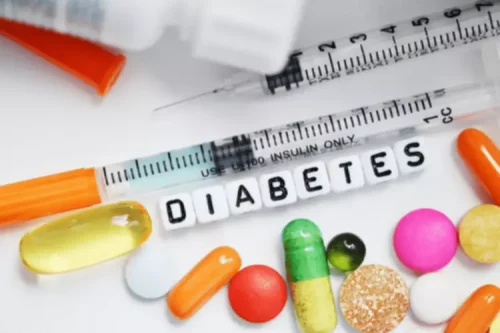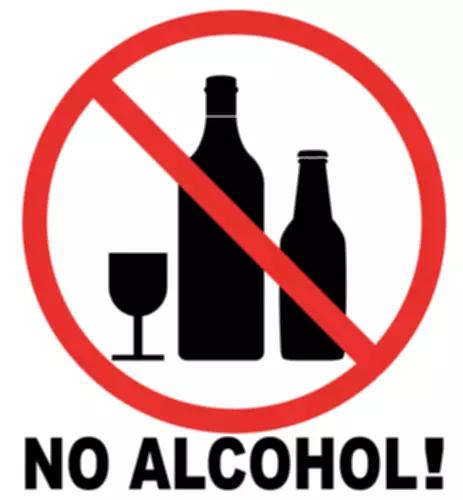Sober living
5 Mindfulness Practices for Addiction Recovery

The Appendix Table 5 provides a detailed example of the support provided by local congregations to Appendix Table 5 in Annapolis, Maryland, where the authors live. The 160 weekly meetings outlined in the Appendix’s Table 5 represent more than half (57%) of the 281 A.A. Meetings held in the Annapolis Area each week (Annapolis Area Intergroup 2017). It is also not unusual for some congregational properties to serve as a hub for A.A. In historic downtown Annapolis, one of the buildings on the campus of the First Presbyterian Church, known as the Red House, serves as a permanent place for A.A. Meetings occur inside the church buildings, the programs offered are spiritual and not religious; in other words, they are not based on the religion or religious oversight of the churches hosting the groups.

Is there good evidence for mind-body medicine approaches to recovery?
If you’re seeking help for yourself or a loved one, our meditation for addiction recovery expert team is here to guide you every step of the way. The US DOT (2016b) uses a value of $9.6 million (according to the 2015 value of dollar) for each expected fatality reduction, with sensitivity analysis conducted at alternative values of $5.4 million and $13.4 million. The US Environmental Protection Agency’s (EPA) (2016) current guidance calls for using a VSL estimate of $10.1 million (according to the 2015 value of dollar). The US Department of Health and Human Services (HHS) (2016a, b) suggests using the range of estimates from Robinson and Hammitt (2016), a low of $4.4 million to a high of $14.3 million with a central value of $9.4 million (according to the 2015 value of dollar). Groups can range from those with no religious content, such as A.A. Agnostics of the San Francisco Bay Area, mentioned above, to those that have overt religious content such as closing with the Lord’s Prayer.
- Meditation is a powerful yet simple technique with many health benefits, including reduced stress and anxiety.
- Additionally, it’s vital to view meditation as a supplementary component of a broader recovery strategy, not as the sole solution.
- Keeping a steady and calm breath while meditating will help you focus on the present moment.
Empirical Evidence of Faith’s Contribution to Preventing Substance Abuse and Helping People Recover from It
Indeed, the benefits of publicly supported faith-based social interventions are well documented (Hein 2014). Faith-based organizations are eligible to compete for government grants on the same basis as all other non-governmental organizations. However, faith-based organizations may use government grants only to the extent that the money goes to non-religious activities in furtherance of a predetermined social service. The delineation between inherently religious activities and government-funded services can be established where both operate at distinct times and venues. Of course, given that religion is part of the solution to the addiction crisis, this dividing wall may come at the cost of lower effectiveness when the power of religious beliefs and practices is segregated from treatment. They discovered that higher spirituality was related to lower substance abuse in both males and females and further moderated the effect of stress that would have otherwise culminated in substance abuse by males.

Meditation for Addiction Recovery: The Beginner’s Guide
Mindfulness helps us build connections by teaching us to view ourselves and others through the lens of compassion. We let go of the judgments, stereotypes, and prejudices that build walls and practice the tolerance, kindness, and empathy that build bridges. In mantra meditation, you would select a particular word or phrase and repeat it. You can repeat the mantra loudly or quietly, and the repetition allows you to focus on the environment around you.

Mindfulness as a means of targeting mechanisms of addiction
- This large body of research suggests that addiction is best regarded as a cycle of compulsive substance use subserved by dysregulation in neural circuitry governing motivation and hedonic experience, habit behavior, and executive function 1.
- Many addicts come into recovery with a history of relationships that they have damaged or that have damaged them.
- This study shows that religious beliefs, practices, and ministries not only provide succor and solace to those in need; they provide tangible, valuable resources that can help prevent and address substance abuse.
- Pre-pandemic studies indicated that more than 85% of individuals relapse and return to drug use within one year of treatment.
- If you’re in professional addiction treatment, you can consult with your care team to incorporate meditation into your treatment and even learn advanced skills.
Opioid overdose visits to emergency rooms increased by 30% from July 2016 to September 2017, according to the latest Centers for Disease Control and Prevention Vital Signs report (Centers for Disease Control and Prevention, March 2018b). The report notes that the Midwestern states were particularly hard hit, with a 70% increase in opioid overdose for both genders and all age-groups. https://ecosoberhouse.com/article/alcohol-neuropathy-symptoms-and-treatment/ The death rates also illustrate that serious thoughts of suicide are common among substance abusers, both of drugs and alcohol. In 2014, suicide was the second highest cause of death among people aged between 10 and 34 and the tenth leading cause of death in the USA overall (Piscopo et al. 2016). Individuals who are recovering from addiction may experience increased stress and anxiety due to the changes in their lifestyle and the challenges of sobriety.
Although it has many forms, meditation is usually practiced by sitting and quietly observing your body or thoughts. Some people focus on their breath, and feel it swell inside their chest before they slowly exhale. Some people pay attention to their physical experience, listening to their entire body and allowing each sensation to exist without judgment. And some simply sit and watch as new thoughts enter and exit their mind. People in early recovery typically experience mood swings, described by some as an emotional rollercoaster. By training the mind to focus on one thing—a sound, word, or breath—at a time, meditation helps recovering addicts maintain a degree of emotional balance.
- You can also check your benefits here or fill out the form below.
- An emphasis on the biological aspect of healing has provided us with advanced diagnostics, safe surgery, and an extended lifespan; the benefits have been extraordinary.
- The most prominent MBIs (i.e., MBRP, MORE, mindfulness training for smokers) for addiction were modeled after the first generation of mindfulness-based therapies like MBSR and MBCT in terms of their structure and format.
- Here, the training is designed to get parts of the brain that have been impaired by persistent drug or alcohol abuse back in shape.
- Furthermore, responder analyses might reveal that individuals classified as non-responders are those who do not meet the minimal therapeutic dose of mindfulness skill practice whereas individuals classified as responders are those who surpass this minimal therapeutic dose of practice.
- Agnostics of the San Francisco Bay Area, mentioned above, to those that have overt religious content such as closing with the Lord’s Prayer.

This helped them regulate their reactions to the emotions and also be kinder to themselves in a healthy way when emotions were triggered. The Recovery Village aims to improve the quality of life for people struggling with a substance use or mental health disorder with fact-based content about the nature of behavioral health conditions, treatment options and their related outcomes. We publish material that is researched, cited, edited and reviewed by licensed medical professionals. The information we provide is not intended to be a substitute for professional medical advice, diagnosis or treatment.
